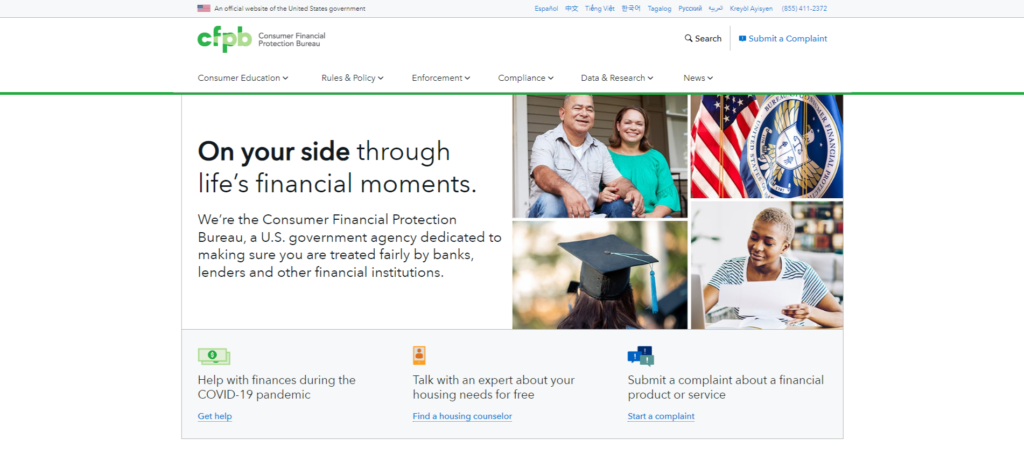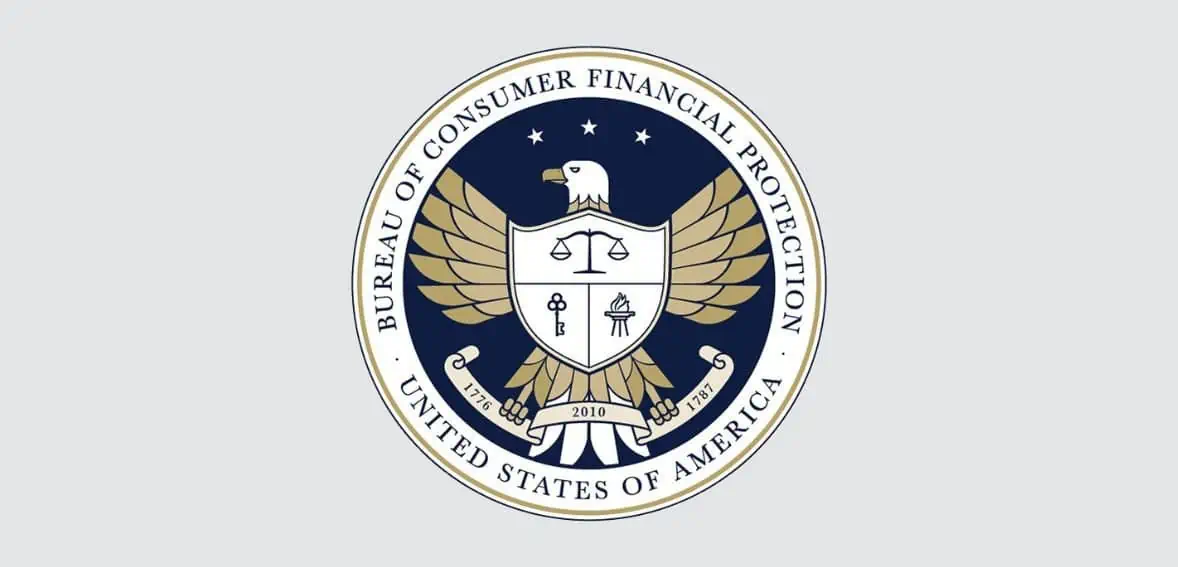The Consumer Financial Protection Bureau (CFPB) is working on a plan to lower overdraft fees. These are the fees Americans pay when their bank accounts run dry. As a part of the Biden Administration’s fee-reducing efforts, this could save Americans around $3.5 billion yearly.
Overdraft fees from banks and credit unions take billions from Americans each year. The proposed rule offers large financial bodies two choices. Either charge a flat fee for overdrafts matching the service cost or adhere to the same disclosures and protections required for credit cards and loans. The CFPB has yet to set a specific benchmark but could possibly lower it to $3. This initiative is designed to boost transparency and fairness in banks and shield consumers from overdraft fees.
CFPB To Cut Overdraft Fees – Key Takeaways
- Cost Relief for Consumers: The CFPB’s choice to cap overdraft fees at a mere $3 is a big help for consumers. It might save more than $3.5 billion! The Biden administration’s goals to cut “extra” costs are aligned with this step. They’re especially concerned about overdraft fees, which have been demanding a lot from Americans’ pockets.
- Addressing Long-Standing Loopholes: The latest rule is designed to plug a “loophole.” For a decade, this hole allowed overdraft lending to avoid consumer protection laws. This regulation is needed because big banks abuse this loophole. They made hefty profits by charging customers overdraft fees. Annually, these fees add up to billions. Plugging these “loopholes” is a way to make banking fair and clear.
- Promoting Transparency and Fairness: This new rule encourages banks to charge a set fee or follow existing laws. These include making important information transparent. The CFPB wants to grow transparency and fairness in banking. This isn’t just about protecting people from high overdraft fees. It’s also about creating an equal financial burden.
- Future Outlook and Potential Challenges: The public comment has until April 1 until the final ruling. The rule is scheduled for October 1, 2025. But, a potential challenge lies ahead as the Supreme Court is set to decide on the constitutionality of the CFPB’s funding structure. Despite this, consumer advocates applaud the initiative as a crucial step toward steering banks away from exploitative fees, emphasizing quality service over profit-centric practices.
Background

Image source
The Biden Administration has launched several programs to curb high fees. In early 2022, the CFPB began to reduce these unnecessary charges to save Americans substantial amounts of money. This step has become widely popular since the very start, and over eighty thousand people responded, as most were upset about overdraft fees.
Recently, the CFPB told Atlantic Union to pay $6.2 million. The bank had tricked customers into misleading overdraft programs. In 2022, Regions Bank also got in trouble. They had to pay $191 million for unfair overdraft fees on ATM and debit card use. Wells Fargo also had a big fine from the CFPB – over $200 million.
This work goes beyond just banks. In October, the FTC proposed rules to stop surprise fees. Businesses would have to tell customers about fees ahead of time and in a clear manner. This includes places that sell tickets like Ticketmaster – they’re known for service fees. Big companies like Airbnb would also be impacted. They charge cleaning and service fees. The proposal also includes hospital bills. Sometimes, there are hidden fees from doctors that aren’t in the hospital’s network.
The goal is to make things clear for consumers and protect them from unexpected fees in many sectors. In response to the CFPB’s push to cut high fees, a ton of banks changed their rules about overdrafts and minimum fund charges. These tweaks caused a big stir in the market. They saved people $3.5 billion a year just from lower overdraft fees. Plus, they saved an extra $2 billion on “non-sufficient balance” fees.
CFPB’s Overdraft Fee Crackdown – Closing Gaps and Ensuring Transparency
Recently, the CFPB introduced a rule to tackle high overdraft fees charged by big banks across the country. This rule aims to seal a more than a decade-long “loophole.” The loophole lets overdraft lending bypass certain rules like the Truth in Lending Act (TILA). This step comes ahead as a protection against these charges, as for years, these banks have made lots of money from overdraft loans. They earn billions each year from only this!
With this new rule, these big banks can still offer overdraft loans. But, they must follow existing loan laws. This means they must tell people about all interest rates, for example. Other things include overdraft service charges, which can cost about $35 each time and can sometimes equal an APR of a staggering 16,000%!
Now, if banks opt to charge a fee to cover costs, it should be under the set benchmark, which is expected to be anywhere from $14, $7, $6, or even $3. Or they can calculate their own cost, but they have to be transparent and share this data with the customers. This idea supports both openness and fairness in banking. It also makes room for sensible overdraft strategies.
Rohit Chopra, the Director of the Consumer Financial Protection Bureau, highlighted that overdraft loans received special treatment decades ago to assist banks in covering paper checks, commonly sent through the mail. In the present day, the CFPB is putting forward rules to address a longstanding loophole that has allowed numerous large banks to turn overdrafts into a substantial and exploitative fee-generating system.
Regulations are being suggested that will affect banks and credit unions holding more than $10 billion in assets. This includes roughly 175 of the biggest financial firms nationwide. These firms could continue to charge genuine overdraft costs to their clients, but they would be less able to make large profits from this service.
President Biden pointed out that some banks apply ultra-high overdraft fees that can hit $30 or more. These steep fees hit the most underprivileged Americans very hard. Meanwhile, these banks build their wealth. They call it a service, but Biden sees it as an act of taking advantage.
What Can You Expect In The Future?
The public comment period on the CFPB proposal wraps up on April 1. The official start of the final rule is slated for October 1, 2025. It’s expected this fall after satisfying TILA mandates.
But to make the matter a little over the edge, a threat of legal issues looms over and might disrupt the proposal and its origin agency. This year, the Supreme Court will decide a case arguing over the CFPB’s funding structure. Should the court favor this argument, the fate of the bureau and its regulations hangs in the balance.
Yet, some consumer champions applaud the proposal. They say that bank charges, seen more as a cash grab than a real service, typically hurt less wealthy customers most. This change urges banks to focus on excellent service, not on hitting customers with fees.
About The Consumer Financial Protection Bureau
The CFPB is a government body aimed at protecting the public. Its task is to oversee financial products and firms for safety. The CFPB’s goal is to ensure honesty and clarity in consumer finance, especially in areas like mortgages and credit cards.
Its job is to supervise various financial offerings available to the public. The CFPB includes several parts: operations, public relations and education, supervision, legal issues, fair lending and enforcement, monitoring, studies, and rules. These parts work together to protect and teach the public about different financial products and services. The CFPB plays an important part in applying and upholding Federal financial laws. Their aim is for markets to have openness, competitiveness, and justness.
Conclusion
By tackling overdraft charges, the CFPB plays a key role in lessening the financial stress for Americans. Their actions match those of the current Biden government, which aims to cut down high costs that might save individuals billions yearly. The CFPB’s plan? Limit overdraft fees to $3. It should make banks more open and fair. It’s not a standalone effort but part of a wider move to shield people from harsh fees.
Several banks have faced penalties for sneaky tactics lately, highlighting the need for change. With the cutoff for public opinion nearing its end, people are waiting for the final rule, which is due in October.

